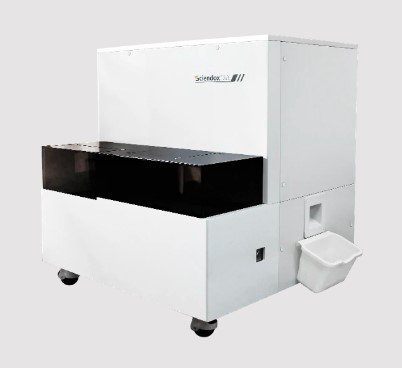Training in Integrating Complementary Medicine Practices for Phlebotomists in the United States
Summary
- Phlebotomists in the United States receive training in integrating complementary medicine practices into their patient care to provide holistic and patient-centered care.
- Training programs cover various complementary medicine practices, such as acupuncture, herbal medicine, aromatherapy, and mindfulness techniques.
- By incorporating these practices into patient care, phlebotomists can support the well-being of their patients and enhance the overall healthcare experience.
Introduction
Phlebotomists play a crucial role in the healthcare system by collecting blood samples for testing and analysis. However, in recent years, there has been a growing recognition of the importance of integrating complementary medicine practices into patient care to provide holistic and patient-centered treatment. In this article, we will explore the training that phlebotomists in the United States receive in integrating complementary medicine practices into their patient care.
Training in Complementary Medicine Practices
Phlebotomists in the United States undergo comprehensive training programs that cover various aspects of healthcare, including integrating complementary medicine practices into their patient care. These programs are designed to equip phlebotomists with the knowledge and skills necessary to provide holistic and patient-centered care.
Acupuncture
One of the complementary medicine practices that phlebotomists receive training in is acupuncture. Acupuncture is a traditional Chinese medicine technique that involves inserting thin needles into specific points on the body to promote healing and alleviate pain. Phlebotomists learn about the principles and techniques of acupuncture and how it can be integrated into patient care to enhance treatment outcomes.
Herbal Medicine
Phlebotomists also receive training in herbal medicine, which involves using plants and plant extracts for medicinal purposes. They learn about different herbs and their therapeutic properties, as well as how to safely incorporate herbal remedies into patient care. By understanding the benefits of herbal medicine, phlebotomists can provide patients with alternative treatment options that may complement conventional medical interventions.
Aromatherapy
Another complementary medicine practice that phlebotomists are trained in is aromatherapy, which involves using essential oils and aromas to promote relaxation and improve well-being. Phlebotomists learn how to use aromatherapy techniques to create a healing environment for patients undergoing blood collection procedures. By incorporating aromatherapy into their patient care practices, phlebotomists can help reduce anxiety and stress levels in patients, leading to a more positive healthcare experience.
Mindfulness Techniques
Phlebotomists also learn about mindfulness techniques, such as meditation and deep breathing exercises, to help patients manage pain and anxiety during blood collection procedures. By teaching patients how to focus on the present moment and cultivate a sense of calm, phlebotomists can enhance the overall patient experience and improve treatment outcomes.
Benefits of Integrating Complementary Medicine Practices
Integrating complementary medicine practices into patient care can have numerous benefits for both patients and Healthcare Providers. By incorporating these practices into their patient care, phlebotomists can support the overall well-being of their patients and enhance the healthcare experience.
- Improved Patient Outcomes: By using complementary medicine practices, phlebotomists can help patients manage pain, anxiety, and other symptoms more effectively, leading to improved treatment outcomes.
- Enhanced Patient Satisfaction: Patients often appreciate holistic and patient-centered care that takes into account their physical, emotional, and spiritual needs. By integrating complementary medicine practices into patient care, phlebotomists can improve Patient Satisfaction and loyalty.
- Personal Growth and Development: Learning about complementary medicine practices can also benefit phlebotomists personally by expanding their knowledge and skills in alternative healing modalities. This can lead to personal growth and professional development in their healthcare careers.
Conclusion
Phlebotomists in the United States undergo training in integrating complementary medicine practices into their patient care to provide holistic and patient-centered treatment. By incorporating practices such as acupuncture, herbal medicine, aromatherapy, and mindfulness techniques into patient care, phlebotomists can enhance the well-being of their patients and improve treatment outcomes. Ultimately, integrating complementary medicine practices into patient care can lead to more positive healthcare experiences for both patients and Healthcare Providers.

Disclaimer: The content provided on this blog is for informational purposes only, reflecting the personal opinions and insights of the author(s) on the topics. The information provided should not be used for diagnosing or treating a health problem or disease, and those seeking personal medical advice should consult with a licensed physician. Always seek the advice of your doctor or other qualified health provider regarding a medical condition. Never disregard professional medical advice or delay in seeking it because of something you have read on this website. If you think you may have a medical emergency, call 911 or go to the nearest emergency room immediately. No physician-patient relationship is created by this web site or its use. No contributors to this web site make any representations, express or implied, with respect to the information provided herein or to its use. While we strive to share accurate and up-to-date information, we cannot guarantee the completeness, reliability, or accuracy of the content. The blog may also include links to external websites and resources for the convenience of our readers. Please note that linking to other sites does not imply endorsement of their content, practices, or services by us. Readers should use their discretion and judgment while exploring any external links and resources mentioned on this blog.
